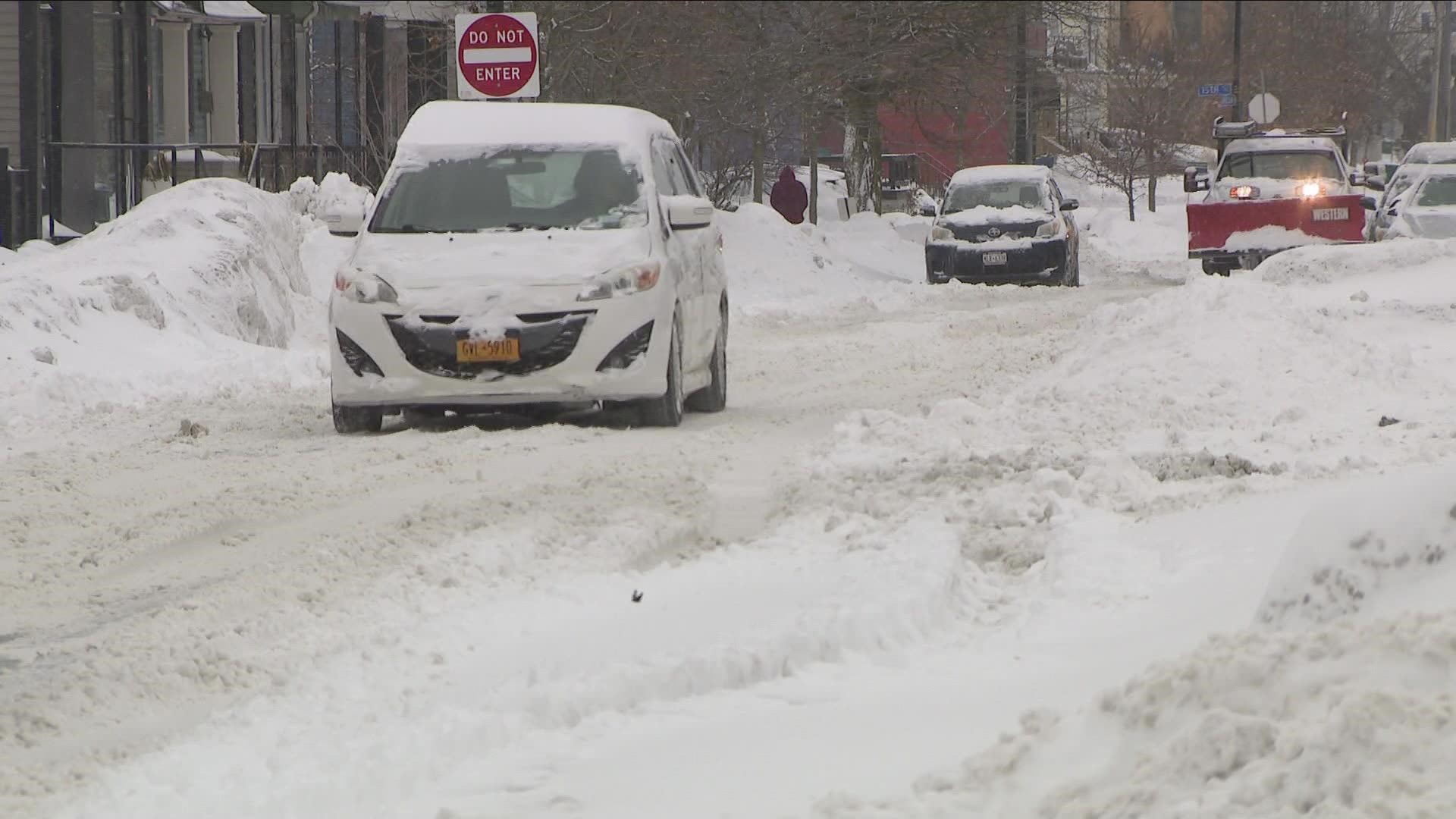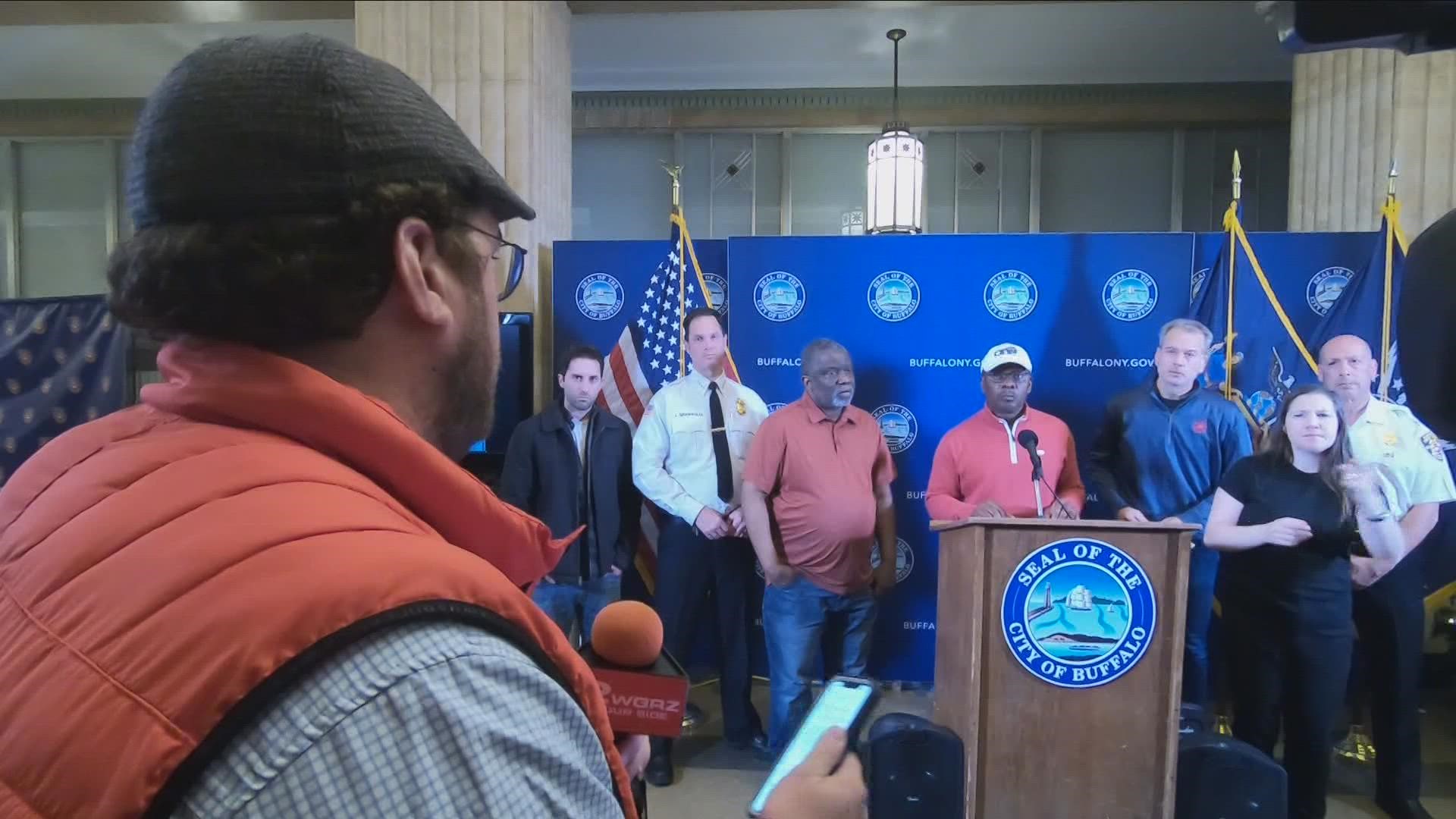BUFFALO, N.Y. — What was touted as a way to let Buffalo neighbors keep a closer eye on snow plowing efforts around the city failed to do so during the first big lake effect storm of the season.
Just one day into the event which dropped as much as 4 feet of snow on South Buffalo, city leaders announced the system was malfunctioning. A week and a half later they laid out what happened.
“The new system helped plow drivers but it did not do much for our residents,” Buffalo Mayor Byron Brown said at a press conference Tuesday.
The Mayor and his newly appointed Department of Public Works Commissioner Nathan Marton described several failures with the GPS tracking system that prevented their “Buffalo Snow Plowing Status” map from accurately reporting, in some instances, where city plows had been.
“Without getting too technical the GPS system worked for internal snow operations and emergency response, but it did not properly communicate the same data publicly,” said Mayor Brown.
The new system is supposed to use GPS units attached to city plows to show where crews have been and when, within the last 6 hours, 6 to 12 hours, 12 to 24 hours, and over 24 hours based on a color-coded street grid.
During the most recent lake effect storm, however, Commissioner Marton said they found out some of those GPS units were not working, others kept turning on and off and the map created to track the plows didn't quite match up with reality.
For all of those reasons, the map did not always accurately show where plows were working like it was designed to do.
“The assessment we're taking is, where do we stand right now and how do we take steps to improve it. That's kind of our goal. How do we get [this system] to be highly functional, 100% is the goal obviously by the next storm,” said Commissioner Marton.
The system was created by the company Geotab, a worldwide telematics vendor that specializes in things like fleet monitoring, accountability, and other optimization methods meant to help cities maximize efficiency. Similar systems from Geotab are used in numerous cities around the world.
After discovering the aforementioned issues with the City of Buffalo’s system Commissioner Marton said the company has been working to resolve them.
“We're working with them, they're working with us, they're bringing in resources, we have a dedicated person they've assigned to work with our team at this point in time, that's different than a lot of other cities, so we're going to work aggressively with them to get this system better,” Marton said.
The extra work will not cost the city extra money according to the Commissioner, just additional time to make sure it’s all in order.
Overall, Mayor Byron Brown praised the city’s response to the storm but said that there is room for improvement. That includes better communication with city residents about everything from plowing to parking.
What went well?
“First by working with Governor Kathy Hochul to secure state plows early to assist with main roads, city plows were able to get into side streets and residential streets faster, second we obtained private contractors before the storm hit and that enabled us to haul out snow more effectively and efficiently from South Buffalo, Kaiser Town, and Lovejoy,” said Brown.
The Mayor did respond to questions and comments who were dissatisfied with the city’s response, stating that “residents need to be reasonable.”
“If it's normal snowfall you should have a certain expectation of when your street can be cleared. When it's historic snowfall with driving bans and travel advisories… then the expectation that side streets be completely cleared when snow is falling at 3, 4, 5 inches per hour is not reasonable.”
The storm is expected to cost the City of Buffalo $2.3 million according to the mayor; approximately $1.2 million of which is for private contractors who assisted across the city. In total, city officials estimate that 8 million pounds of snow were hauled to drop-off locations set up around Buffalo.
In summary, city officials feel with a little time to improve and make some tweaks, they will be ready for whenever the next lake effect storm heads to the region.


